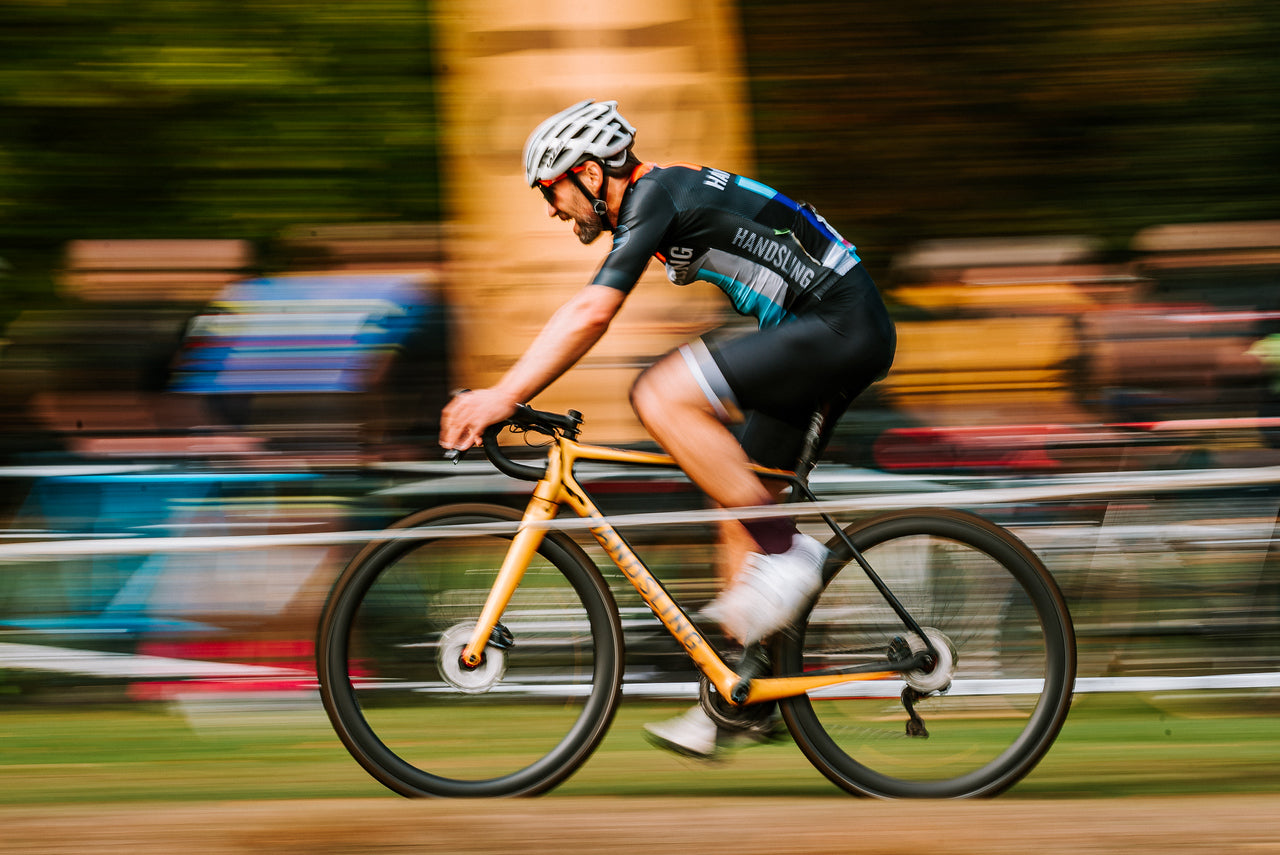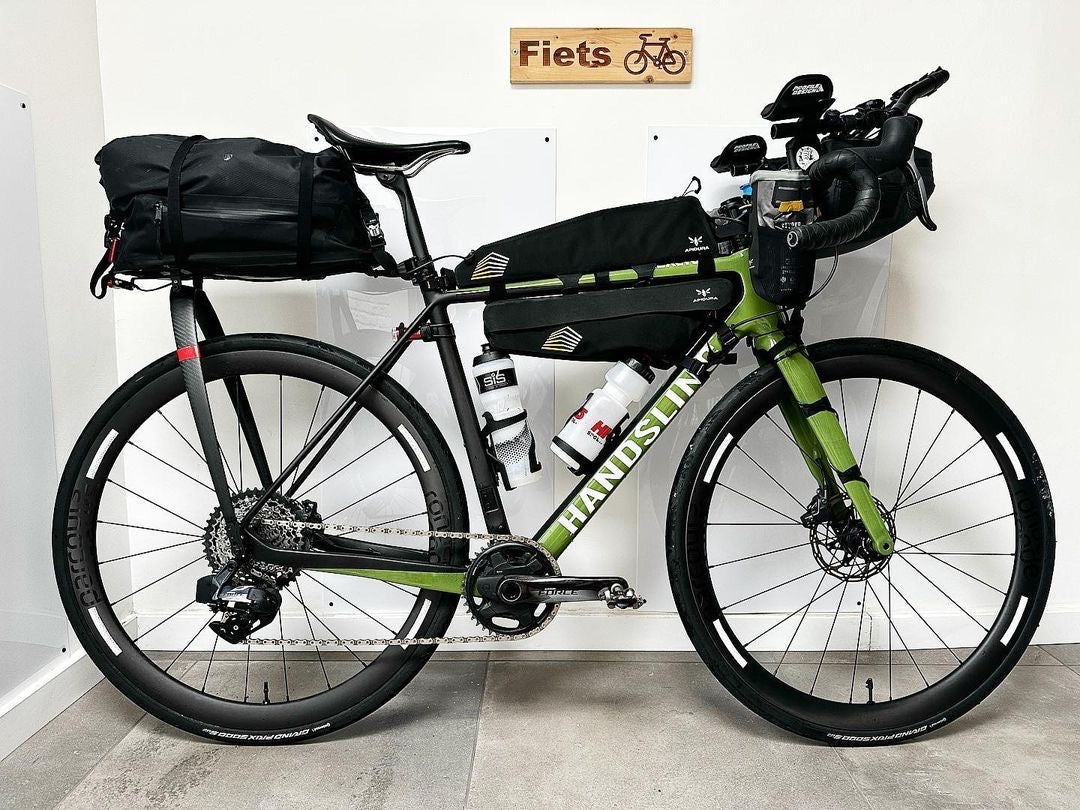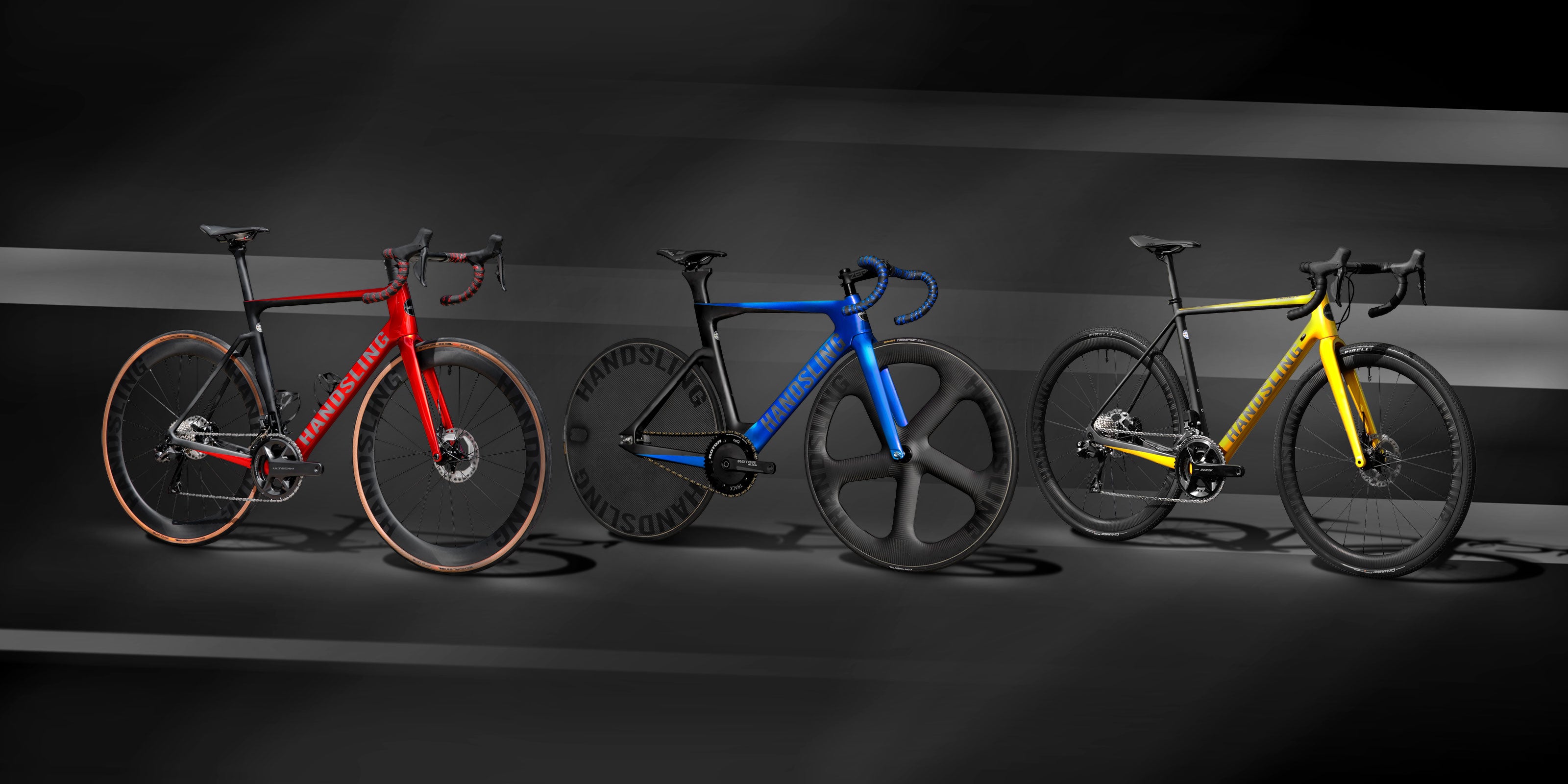As a road cyclist and occasional triathlete, it took some convincing to get me to race around a muddy field. But after one season of cyclocross on my Handsling CEXevo I'm now addicted. As the saying goes - cross is boss. These are my lessons learned after four months of thrills and spills.
All photos by Pitchside Photo

Race Tactics
From the sidelines of a cyclocross race, it all looks quite sedate. Meandering around a field and having a laugh about it afterwards. How wrong I was. Lining up for my first race in the Miche Wessex Cyclo-Cross League, I soon realised this was serious business. Riders discarded layers despite the cold, there was a nervous hush as we awaited the whistle. Then bam - straight into a hell-for-leather sprint to the first corner. I was used to conserving energy until the final push. This was max heart rate from the off. Needless to say I was swamped by the first corner and spat out near the back.

As the season progressed I learned that the start is crucial - choosing the correct gear, clipping in, sprinting to the first corner, and getting the elbows out to defend your position. The trick is to then find opportunities to let your heart rate settle by a few bpm - the approach into corners, descents, drafting on the straights. There needs to be just enough left in the legs to negotiate muddy climbs or sprint past a rival. I've never been so destroyed (yet weirdly elated) after 40 or so minutes of cycling.
Corners and Camber
My power and fitness levels are pretty good, which helped me to a few top ten finishes. However, this masked my deficiencies in bike handling. Where others would power through the muddy corners, I would tiptoe round in a desperate struggle for grip. I soon began to appreciate the phrase 'Grass means Grip'. On a churned up course, the racing line is not necessarily the fastest if there is grass around the outside of the corner.

Corner entry speed is critical. You should approach at the right speed to avoid heavy braking then apply power just after the apex to get drive through the rear wheel on exit. I also discovered the benefit of dabbing your foot on the inside of tight bends to get maximum cornering without coming off. It's not for everyone and requires getting a muddy cleat back into the pedal to get pedalling again, but it helped me keep the rubber pointing the right way.
One of the trickiest skills to master is negotiating off-camber slopes and corners. 'Speed is your friend', one rider told me. I used the pre-race practice laps to ride these sections again and again, slowly but surely building confidence and getting enough speed to avoid gravity taking over. Obviously come the race, other riders took the same line, forcing me into pastures new and often on the deck.
Gears
Looking at other bikes on the grid, I saw a roughly even mixture of 2x and 1x chainsets. The main benefit of 1x is the absence of a front mech. One less component to get mucky. But 1x can risk chain drop and has bigger jumps between gears. A 2x set up provides the option of shifting into the big ring at the push of a button when you need a burst of power.

I built up my Inca Yellow CEXevo frame with a 2x Shimano Ultegra Di2 groupset featuring 46/36t chainrings and a 11-28t cassette. Only once did it let me down, when a stone got wedged between the big ring and the chain stay, making pedalling pretty much impossible.
Tyres
There's a reason the TV cameras focus on tyres not the riders at the start of a pro race. Tyre choice and set up is critical. I went into the season with one set of wheels and ended it with three, all with different tyres to negotiate everything from dry grass to a full blown quagmire. I opted for the Challenge Baby Limus in semi-muddy conditions for their grip, supple feel and wide tread pattern that cleared claggy mud. For extreme wet conditions, I went for the Schwalbe X-One Bites for the extra grip provided by their tightly packed knobbles. However, in drying conditions, they have a tendency to collect mud... and weight (as shown below).

Tyre pressure dominates pre-race conversations for a reason. Occasionally I got it wrong, running too high and losing grip, or too low and having the tyres bottom out on rocks or squirm on corners. The trick is to adjust according to the conditions and get advice from experienced riders. Go low, but not so low that they 'burp' and lose pressure. I ran tubeless tyres at about 20-25psi, but the pros typically fit tubular wheels/tyres that allow even lower pressures.
Running and Jumping
A lot of people ride bikes to avoid running. Cyclocross can feature both, depending on conditions. At one course resembling a certain WW1 battleground, I was pedalling away full gas yet overtaken by someone walking with their bike. Lesson - cyclocross can get so muddy that it's quicker and easier to run than ride. Some people 'shoulder' the bike, others hold the top tube and carry it like a suitcase. Having a lightweight carbon bike provides a huge advantage in all conditions, but especially when lugging it up a muddy hill, when studded shoes also become essential.

As for the dreaded boards, you either perfect the art of bunny hopping or perfect the art of dismounting and remounting. Both are challenging, but I opted for the latter. It takes a lot of practice to smoothly jump back onto the bike at running speed on bumpy ground - a painful experience if you get it wrong.
Conclusion
I would recommend cyclocross to anyone who loves riding their bike. The atmosphere and the friendships (mostly with your closest rivals) over the course of the season are unbeatable. The racing is wheel-to-wheel and shoulder to shoulder, but there are few hard feelings. Crashes are inevitable, but the landings (mostly) soft. The best part is all the added dimensions to CX racing. It's not just about managing your effort over hundreds of kms. It's about nailing the set up, selecting the best lines, adapting how you ride the bike, defending your position and planning your overtakes. And for those who love cleaning their bike, there's no better sport.





Leave a comment
This site is protected by hCaptcha and the hCaptcha Privacy Policy and Terms of Service apply.